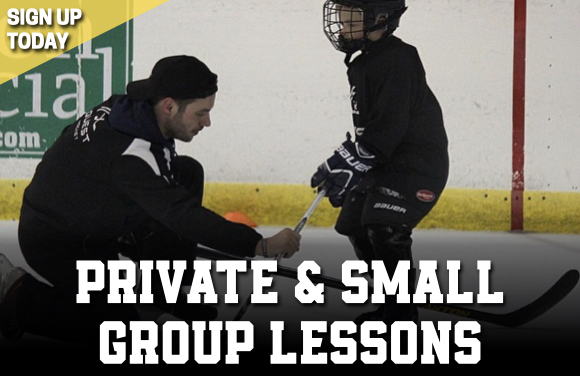
The Numbers’ Game – USA Hockey Study Reveals Importance of Skill Development Training
May 15, 2012
Check out this article from USA Hockey, which reveals the importance of skill development training by hockey players. Players of all ages should focus on the four essential skill areas – skating, shooting, passing and stick handling/puck control – as much as possible to continue to improve.
Quest Hockey is dedicated to improving and developing the skills of our players. Check out our HOCKEY PROGRAMS to learn more about what we offer! Get After It.
| The Numbers’ Game |
| By Harry Thompson “Possession, as they say, is nine-tenths of the law. In hockey, it may be worth even more. Thats what a comprehensive USA Hockey study suggests, adding statistical muscle to back the belief that puck skills are learned in practice, not games. From the smallest Peewee to the most talented Olympic player, the ability to effectively handle the puck is in short supply these days. Many coaches within USA Hockey attribute these diminished skills to a mindset that advocates more games and less practice. To back up this opinion, USA Hockey commissioned a comprehensive study to calculate how much time the best players in the world had the puck on their sticks at the 2002 Olympic Winter Games in Salt Lake City. While most people were glued to the Olympic hockey for pure viewing pleasure, members of USA Hockeys Coaching Education Program were keeping a closer eye on the action. Perched high above center ice at the E Center in Salt Lake and the Peaks Ice Arena in Provo, coaches paired up to observe and record the action of players competing in 31 mens and 24 womens games.
Prior to each game, three players who were expected to be key performers for their teams, were selected for the study. The coaches calculated the length of each players shift, how long they had the puck on their stick, how many passes they received and made and how many shots on goal they attempted. They also counted the number of un-timed touches those when the puck hit their stick if only for a brief moment.
Canada’s Joe Sakic, who dominated play in the gold-medal game, touched the puck for only 1 minute, 19 seconds. In that time he did tally two goals and two assists along with four shots in Canadas 5-2 victory.
The purpose of the study was to determine the best way to develop puck possession skills with youth players. It also provided information when it comes to puck possession in checking and non-checking situations.
On the womens side, Cammi Granato slightly outdid her Canadian counterpart Hayley Wickenheiser, touching the puck for a little more than one minute (1:02.2 to 1:00.9) during their gold-medal outing.
But when even the best player only touches the puck for one minute, what are other players doing?
When you factor in that we chose the players who handle the puck more than others on the ice, you could argue that the numbers we came up with were inflated compared to the average Olympic level player, said Mark Tabrum, director of USA Hockeys Coaching Education Program.
To follow up the Olympic study, USA Hockey volunteers brought their clipboards and stopwatches to the Youth Hockey Tier I National Championships in Colorado Springs, Colo.
While the skill levels varied, the results were pretty much the same. Even the best players, the statistics showed, dont handle the puck as much as you might think.
These studies validate what a lot of people have been advocating for a long time, said Kevin McLaughlin, USA Hockeys director of Youth Hockey.
The numbers showed that stick and puck skills cant be developed in a game. It proves you can accomplish a lot more in practice with the puck than in a game.
It also showed that you get so few opportunities with the puck in the game that you have to be proficient when it does hit your stick.
USA Hockey hopes the results of the Observation Project will serve as a reference for coaches, parents, and players as they set up their future practice and game schedules.
I think we can safely say that games are not the environment to develop puck skills in our youth players, McLaughlin said.
Obviously, in practice, players will get a lot more ice time; will carry a puck a lot longer than one minute; can give and receive a lot more passes; and will take a lot more shots.
Not everyone may agree with the statistical conclusions provided by the study. As Mark Twain once wrote, there are three kinds of fallacies: lies, damned lies, and statistics. There will always be those who believe that letting a Peewee play the equivalent of an 82-game NHL schedule is the best way to develop a hockey player.
The dilemma that virtually every coach of developmental aged hockey players is faced with is, How much ice time does he devote to practice and how much to games? Observation Project Chairman Rob Bruendl wrote in his final report.
Ice time is getting more expensive every year. Parents enjoy watching their children play and urge the coach to schedule more games. So coaches and parents try to convince themselves that their players are learning skills during the games.
USA Hockeys National Coach-in-Chief Bob OConnor disagrees with the idea of using games as a learning tool, and he says the numbers prove it.
Having demographics of the Olympics with the best players in the world and then following it up by studying our National Championships just goes to show that you only have limited time to handle the puck and when you have it you better learn to handle it right, said OConnor.
We’ve been saying this over and over. The more quality repetitions you get with any given skill, the easier it will be to turn that skill into instinct. If you only have the puck two minutes you’re not going to get that practice of receiving it and controlling it.
George Kingston, a member of the physical education department at the University of Calgary conducted a similar study back in the 1970s.
Kingston looked at skill development in Sweden, Finland, the former Czechoslovakia, and the former Soviet Union and compared their techniques to how players were developed in Canada.
According to Kingston, Europeans typically had two to five practices for each game they played, compared to North American players, who played two or three games for each practice. Kingston said that in order to get one hour of quality work in practicing the basic skills of puck control, it would take approximately 180 games.
Our emphasis on a great number of games, in part, reflects the problem faced by minor hockey associations; namely, that they only get a restricted amount of ice that is primarily given to scheduling of games, wrote Kingston, who is now an assistant coach with the Florida Panthers.
O’Connor has been leading the charge to reverse that trend in this country for an equally long time.
Ice time could be the best coach there is. The more often your son or daughter handles the puck, the more skill and confidence they will have.
So what effect will these numbers have on the hockey community in the United States? Armed with this statistical ammunition, USA Hockey will continue advocating a 3-to-1 practice to game ratio in future coaching clinics in hopes of persuading coaches to use their ice time more wisely when it comes to skill development.
We’ll use these figures to preach the importance of skill development and practice-to-game ratios, Tabrum said.
I think itll grab the attention of some people who have never stopped to think about it. Games are a measuring stick where you evaluate skill development, but its not where you teach it.”
Get After It. |


